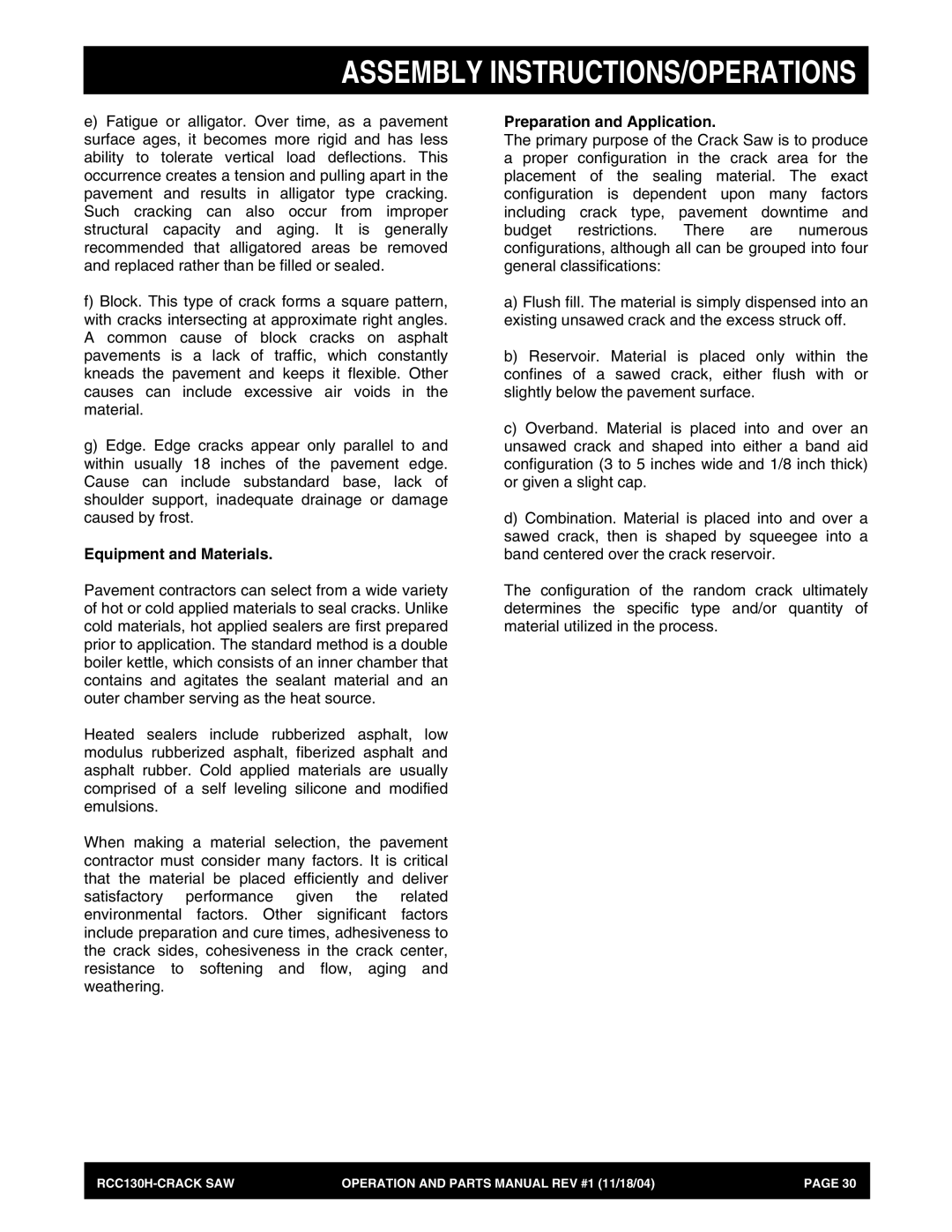RCC130H specifications
The Stow RCC130H is an advanced compact ride-on compactor designed for efficient and powerful performance in various construction and road maintenance projects. Known for its reliability and versatility, the RCC130H is a popular choice among contractors and operators seeking optimal results in soil and asphalt compaction.One of the key features of the RCC130H is its robust engine. Equipped with a high-performance diesel engine, the compactor provides excellent power and torque, enabling effective operation even in challenging terrains. The engine is designed for fuel efficiency, ensuring lower operational costs while delivering superior compaction force. The machine's hydraulic system is equally impressive, allowing smooth operation of the vibratory system that enhances productivity by increasing compaction density in less time.
User comfort is another priority in the design of the RCC130H. It features an ergonomic control layout that allows operators to easily reach all necessary functions, reducing fatigue during long hours of operation. The operator's platform is spacious and designed with optimal visibility in mind, enhancing safety and control when navigating through job sites.
The RCC130H showcases advanced compaction technologies, including dual amplitude settings. This feature lets operators choose between different settings depending on the material being compacted—whether it’s granular soils, cohesive materials, or asphalt. The machine’s heavy-duty drum is specially designed to maximize contact with the surface, ensuring uniform compaction results.
Durability is also a hallmark of the Stow RCC130H. Constructed with high-quality materials and components, the machine is built to withstand the rigors of demanding work environments. Its frame design offers stability and reduces the impact of vibrations on the operator, which enhances long-term comfort and control.
Maintenance is made simple with the RCC130H, featuring easy access points for routine checks and servicing. The design minimizes downtime, ensuring that the machine stays operational and productive on the job.
In summary, the Stow RCC130H is a feature-rich compact ride-on compactor designed for maximum efficiency and performance. With its powerful engine, ergonomic design, advanced compaction technology, and durable construction, the RCC130H is an excellent investment for those looking to enhance their compaction operations on various job sites.
